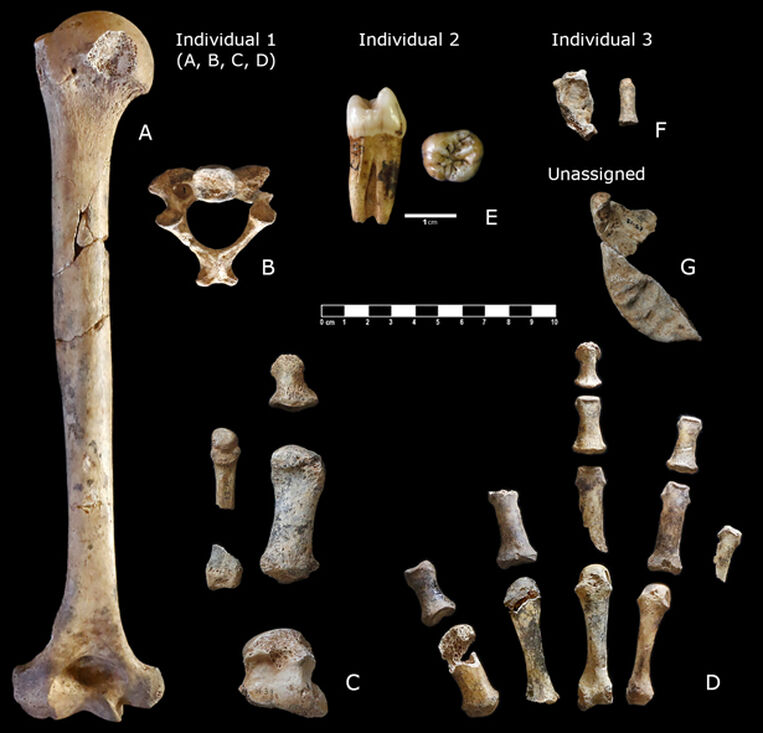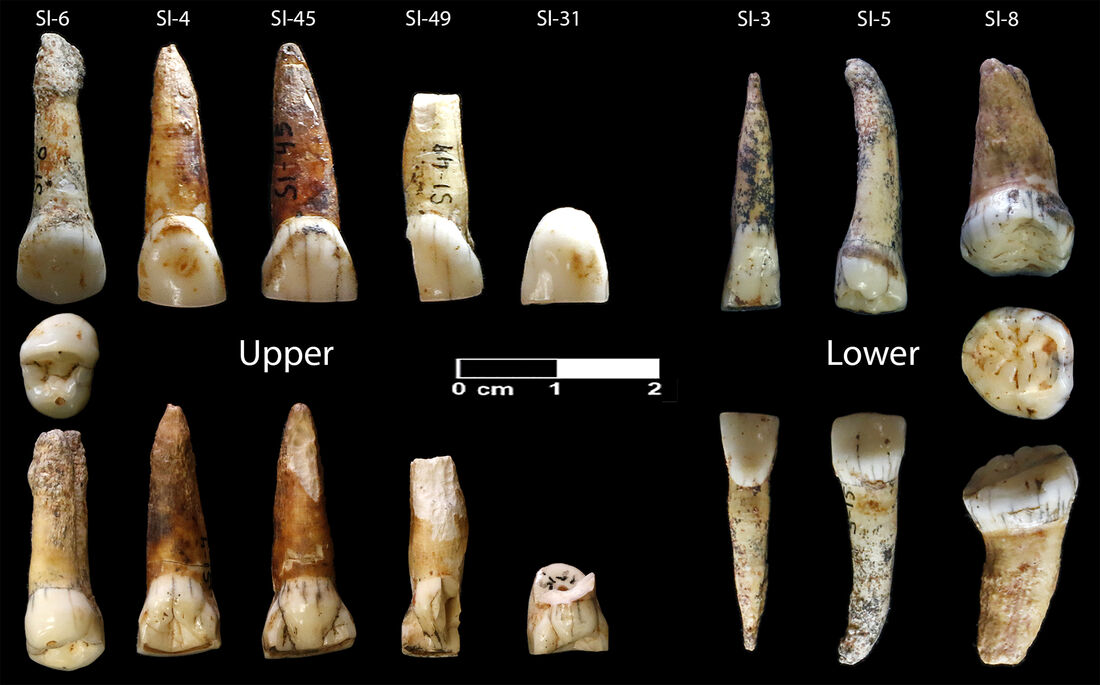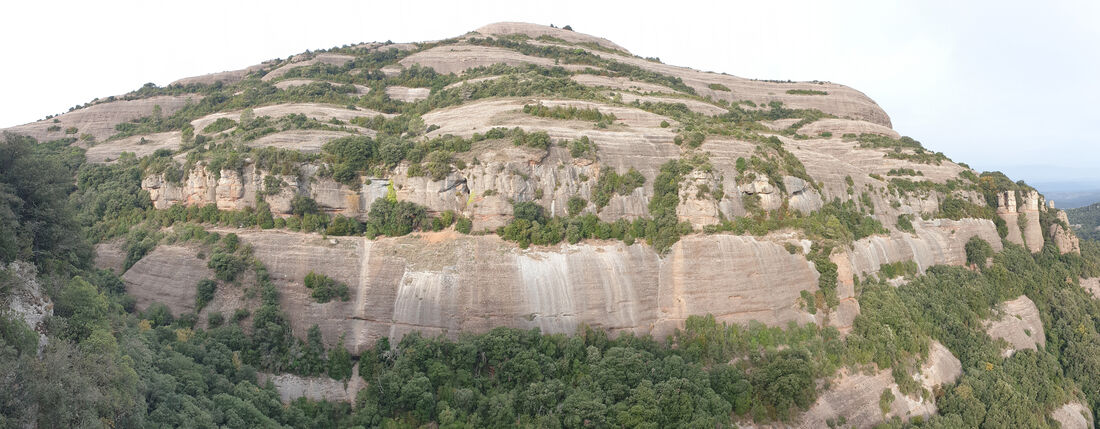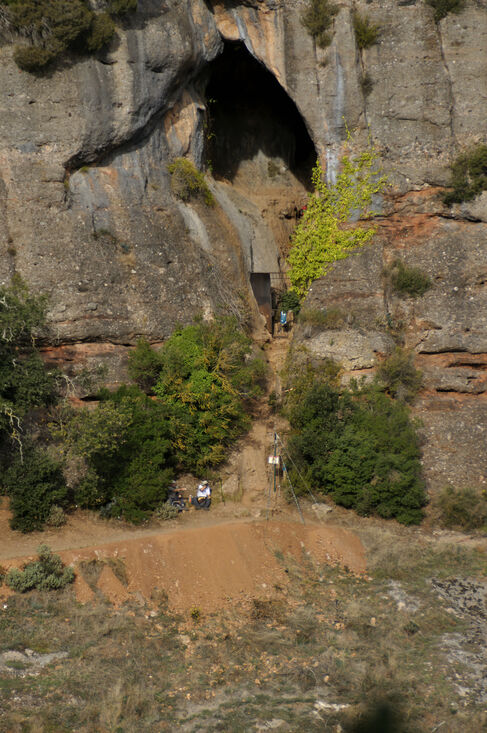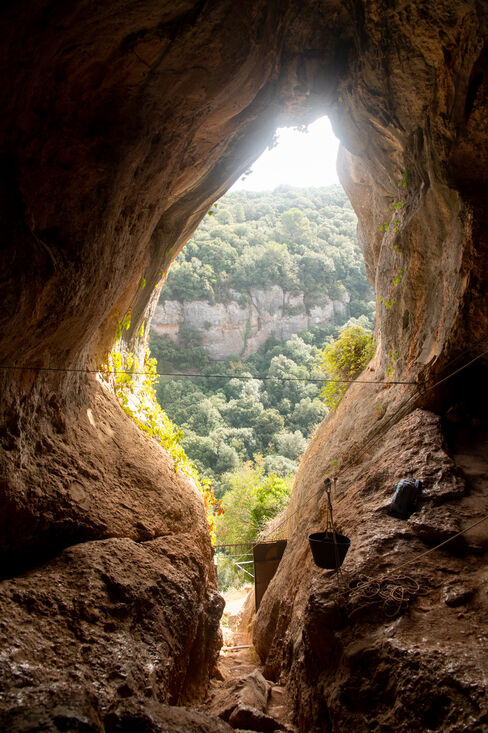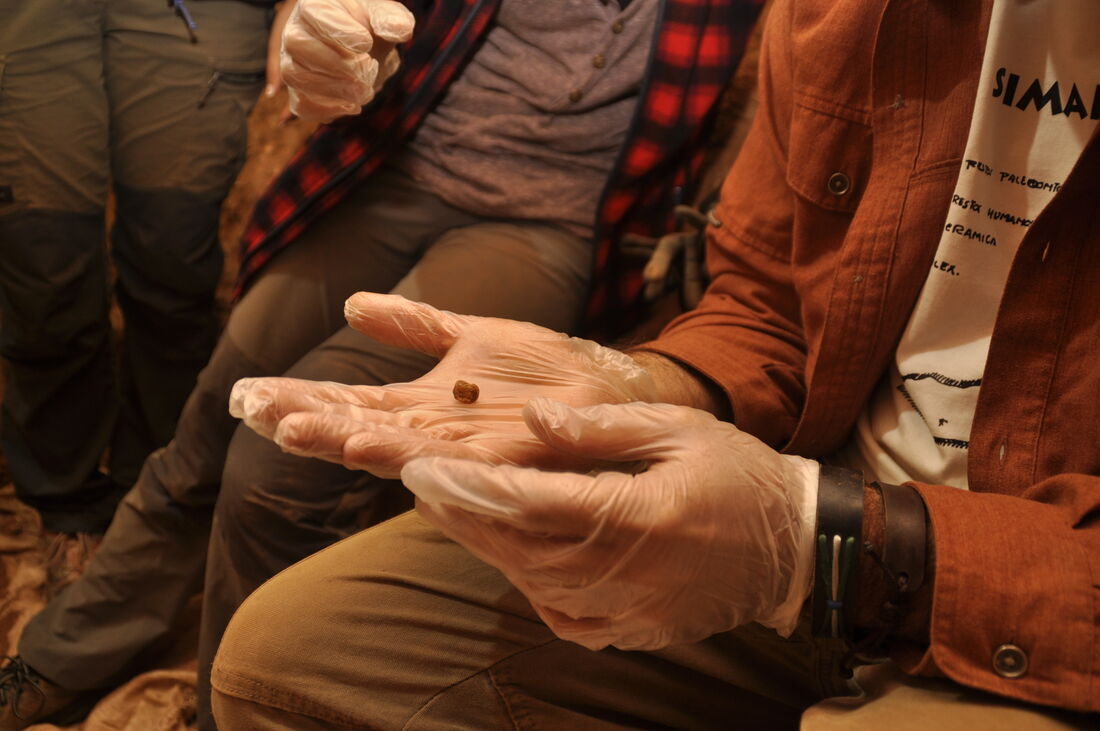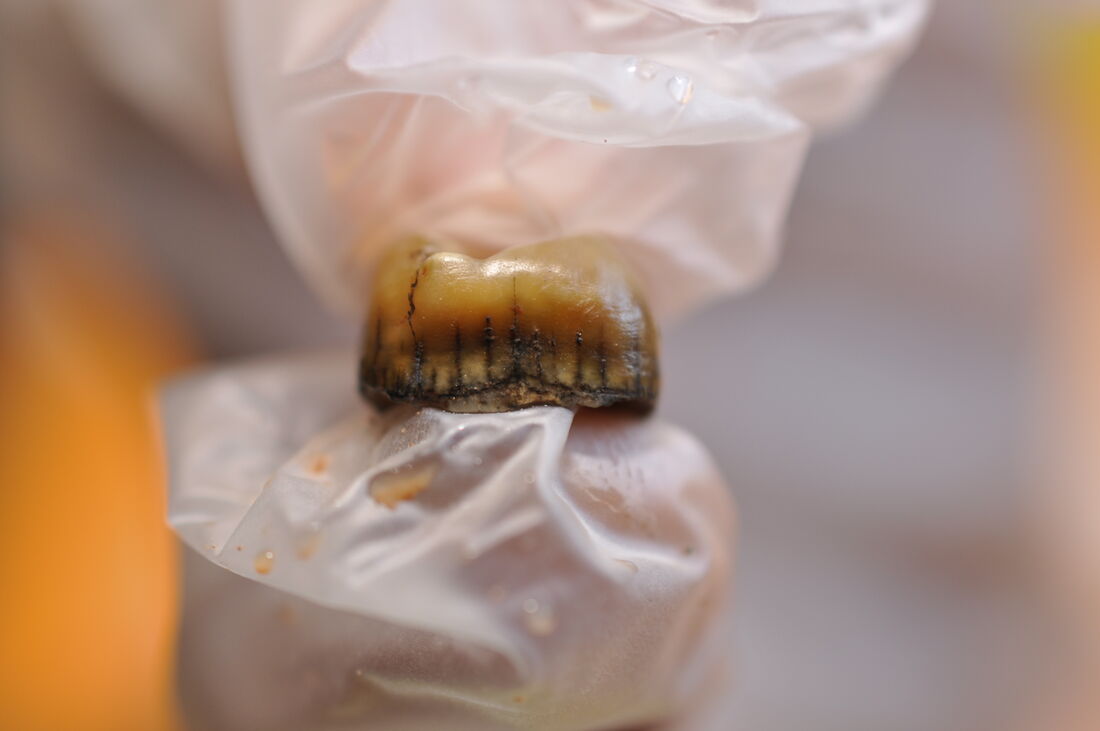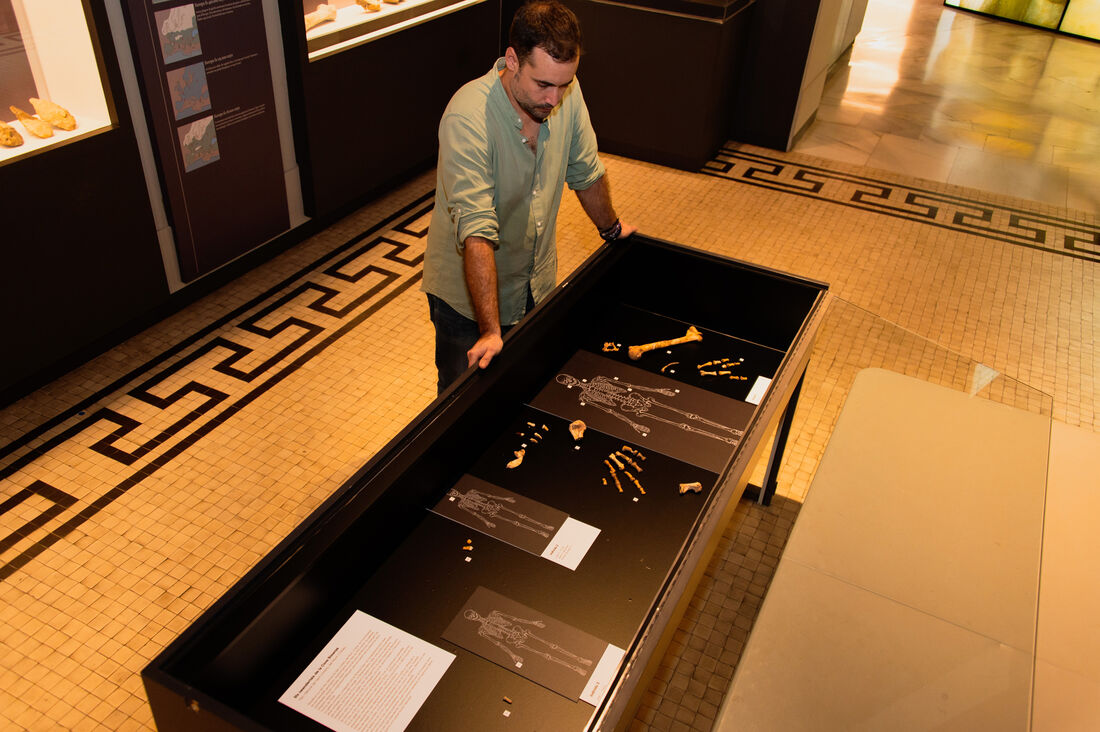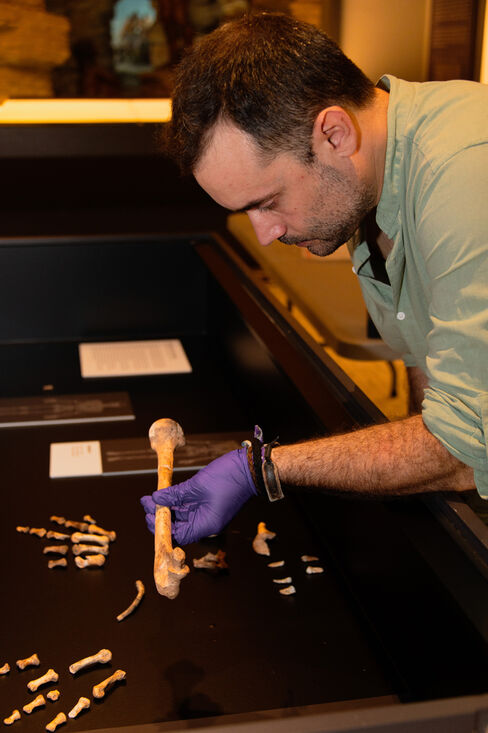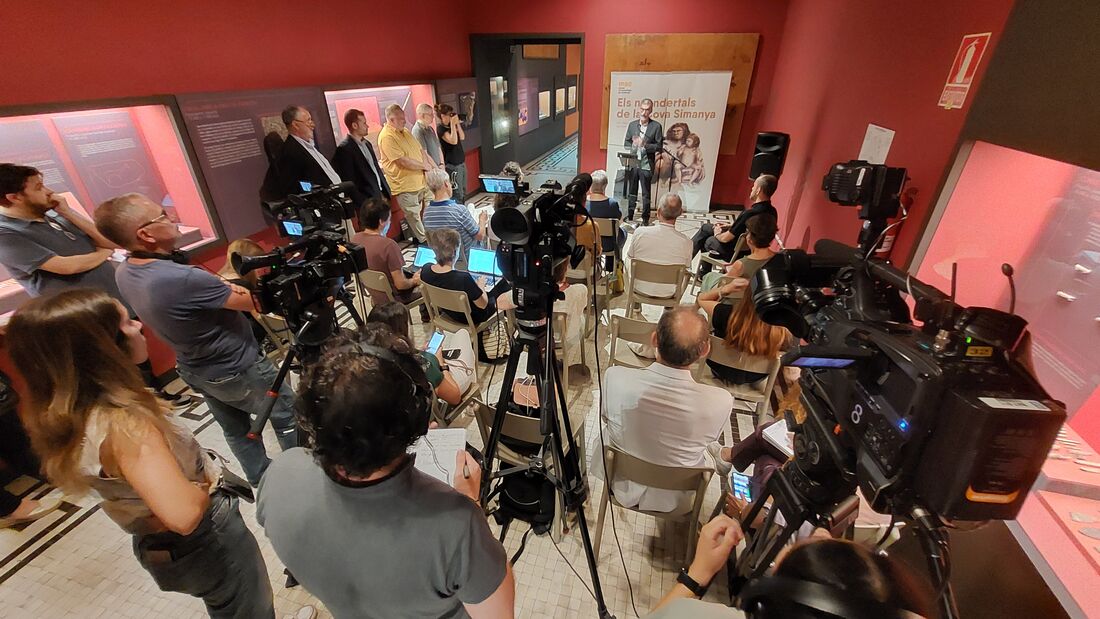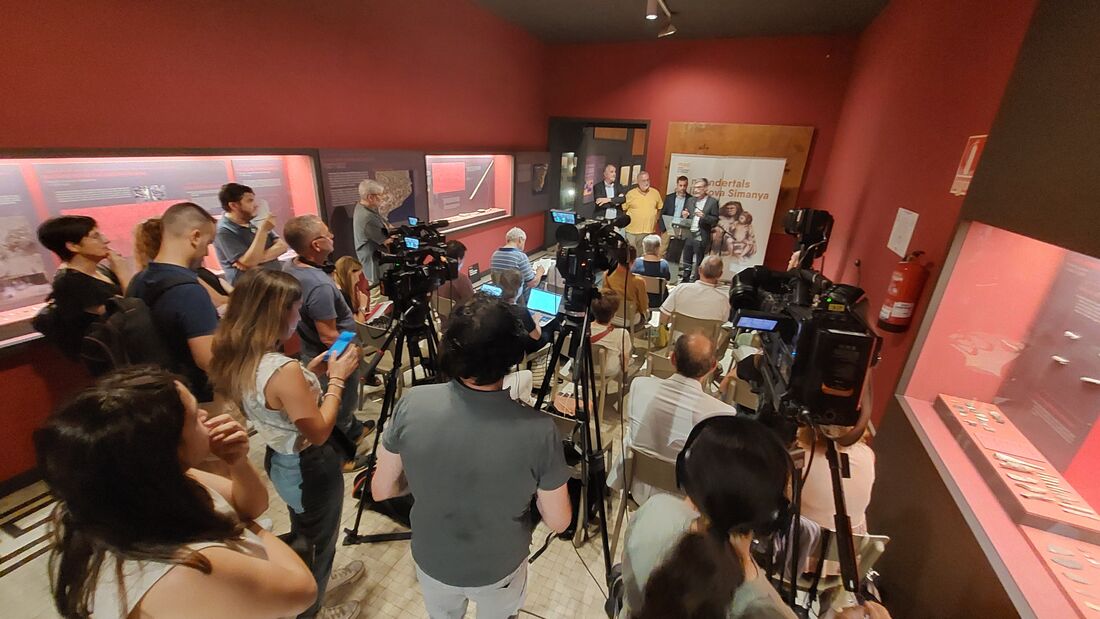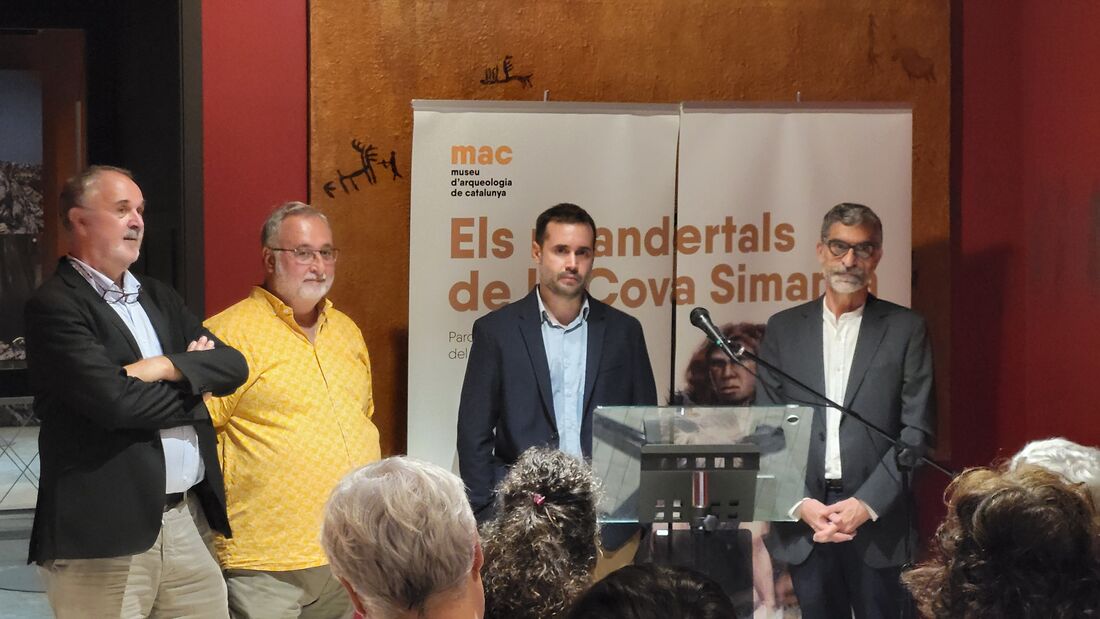Neanderthal Remains Over 50,000 Years Old Identified at Cova Simanya (Barcelona, Spain)
The research team has announced 54 Neanderthal remains corresponding to at least three individuals
This is the most significant collection of Neanderthal remains in Catalonia and one of the most important in the Iberian Peninsula. The scientific results are published in the prestigious international journal Frontiers in Earth Science
This morning, Neanderthal remains from the Cova Simanya site (Sant Llorenç Savall) located in the Sant Llorenç del Munt i de l'Obac Natural Park (Barcelona) were presented. The collection consists of 54 Neanderthal remains corresponding to at least 3 individuals, making it the most significant in Catalonia and one of the most important in the Iberian Peninsula.
Attending the event were representatives from the Department of Culture of the Generalitat de Catalunya; from the Diputació de Barcelona; the director of the Archaeological Museum of Catalonia (MAC), Mr. Jusèp Boya Busquet; from the Catalan Institute of Human Paleoecology and Social Evolution (IPHES-CERCA) and the Professor of Prehistory and director of the Seminar of Studies and Prehistoric Research of the University of Barcelona (SERP-UB), Dr. Josep Maria Fullola, along with the co-directors of the excavation, Dr. Juan Ignacio Morales, researcher from IPHES-CERCA and SERP-UB, Mr. Artur Cebrià, from SERP-UB, and Dr. Antonio Rosas, researcher from the National Museum of Natural Sciences – Higher Council for Scientific Research (MNCNM - CSIC) who have contextualized the Cova Simanya site and presented the Neanderthal remains.
The public presentation of the Neanderthal remains coincided with the release of the scientific article "New assemblage of late Neanderthal remains from Cova Simanya (NE Iberia)" published in the prestigious international scientific journal Frontiers in Earth Science, led by Dr. Morales, Mr. Artur Cebrià and Dr. Rosas (MNCN-CSIC) and in which other researchers from IPHES-CERCA, SERP-UB, Rovira I Virgili University, Autonomous University of Madrid, University of Santiago de Compostela, University of Alicante, Institute of Evolutionary Biology of Pompeu Fabra University – CSIC, Catalan Institute of Paleontology, Madrid Institute for Advanced Study, University of Bologna, Natural Sciences Museum of Barcelona, and the National Museum of Natural Sciences of Madrid have also participated.
Cova Simanya, a Unique Site for Understanding Neanderthals
The study of a set of materials stored at the Archaeological Museum of Catalonia, originating from interventions carried out in 1978-79, alerted researchers to the presence of Neanderthal remains at Cova Simanya. This discovery encouraged researchers to initiate a research project in 2020 with the primary objectives of studying the human fossil remains and their archaeo-paleontological context.
Concurrently, recent excavation work has allowed for the reconstruction of the origin and history of the Neanderthal remains, as well as the recovery of new ones. Likewise, the recovered stone tools, the bones of animals processed by the Neanderthals, and the documented fire features suggest that Cova Simanya was a significant site for populations of the Middle Paleolithic era.
The Published Collection Consists of 54 Neanderthal Remains
The remains correspond to three individuals: an adult, likely a woman, a juvenile around 11 or 12 years old, and a child around 7-8 years old. "The adult individual is particularly noteworthy, as remains from both arms have been identified, including a complete humerus and an almost complete hand, as well as feet, various vertebrae, and ribs," comments Dr. Antonio Rosas, director of the Paleoanthropology Group at MNCN-CSIC. Up to 10 dental pieces and a jaw fragment have also been identified. Two of these teeth belong to the juvenile, and the remaining eight may be compatible with the adult, although "the possibility that they belong to more individuals cannot be ruled out," he adds.
The collection presents unequivocal anatomical features that clearly attribute it to Neanderthals. These details not only help differentiate these individuals from other species of the Homo genus but also provide a better understanding of the phylogeography of the Neanderthals that populated Europe before the arrival of our species, Homo sapiens. According to Rosas, "The fossils from Cova Simanya will help clarify the role that the Iberian Peninsula has played in the complex evolutionary history of Neanderthals." In this regard, the researcher and one of the leading international experts on Neanderthals says, "We are beginning to understand that there are different lineages of this extinct species, but as of now, we still do not know the reasons for how and where they originated." "Iberia and Cova Simanya have much to say in this regard," he predicts.
"The initial dating indicates that the presence of Neanderthals at Cova Simanya is older than the Carbon-14 limit; that is, older than 50,000 years," says Dr. Juan Ignacio Morales, co-director of the excavations and researcher at IPHES-CERCA. Alternative dating techniques are currently being used that should allow for determining the age of the remains with greater precision, the researcher points out.
Along with the use of the cave by the Neanderthals, fieldwork has shown that the cavity also served as a hibernation refuge for both the brown bear and the cave bear, a use that extended, at least, until 42,000 years ago. Much later, the cave was used sporadically from the Neolithic period to much more recent times, comments Dr. Morales.
Institutional Support and Funding
From an institutional standpoint, these results are the product of synergies and coordinated work between the Department of Culture of the Generalitat de Catalunya, through the Archaeological and Paleontological Heritage Service and the Archaeological Museum of Catalonia, and the Diputació de Barcelona through the Sant Llorenç del Munt i de l'Obac Natural Park.
The archaeological research at Cova Simanya is framed within the four-year project ARQ001SOL-172-2022 "Cultural Transitions during the Pleistocene and Holocene in the Coastal-Precoastal Area of Catalonia," linked to the Seminar of Studies and Prehistoric Research of the University of Barcelona (UB) and approved by the Department of Culture of the Generalitat de Catalunya; the project PID2021-122356NB-I00 of the National Museum of Natural Sciences – CSIC; and the Palarq Foundation. It also has the support of two projects from SERP, one from the Ministry PID2020-113960 and the other corresponding to the Quality Research Group SGR-00337 of the Generalitat de Catalunya. The excavations have the support and funding from the Sant Llorenç del Munt i de l'Obac Natural Park and the Diputació de Barcelona, which have protected the site and organized guided tours.
Scientific paper:
Morales, J. I., A. Cebrià, M. Soto, A. Rodríguez-Hidalgo, R. Hernando, E. Moreno-Ribas, D. Lombao, J. R. Rabuñal, D. M. Martín-Perea, A. García-Tabernero, E. Allué, A. García-Basanta, E. Lizano, T. Marquès-Bonet, S. Talamo, L. Tassoni, C. Lalueza-Fox, J. M. Fullola and A. Rosas (2023). "A new assemblage of late Neanderthal remains from Cova Simanya (NE Iberia)." Frontiers in Earth Science 11: 1230707.
https://www.frontiersin.org/articles/10.3389/feart.2023.1230707

